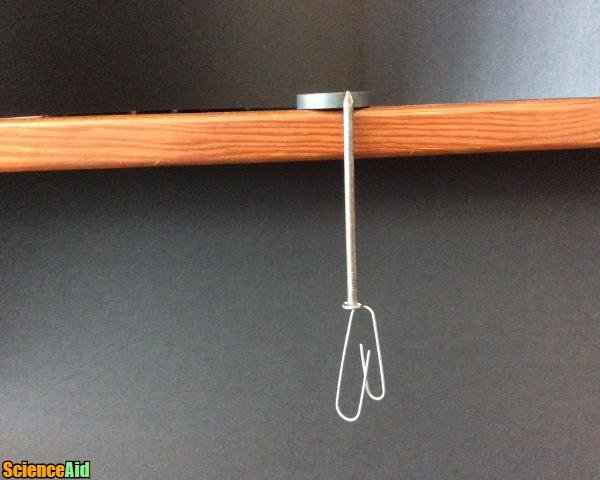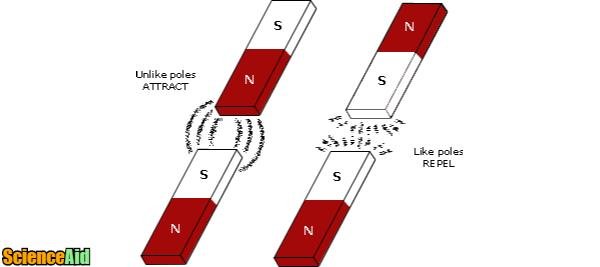Magnets
Edited by Tosin Emmanuel, Jen Moreau, Sharingknowledge, SarMal
Magnets are substances or objects that attract other objects to themselves. It is believed that the earliest magnet was discovered in 800BC as a stone that showed travelers way (loadstone otherwise known as magnetite from magnesia). Elements such as iron, cobalt, nickel, some alloys, steels, which are attracted by the magnet are regarded as magnetic material while substances or elements such as copper, brass, wood, glass, rubber, rubber, plastic, are not attracted by magnets and are termed non-magnetic material.
Types of Magnets
- 1Temporary magnets are magnets that are easily made and easily demagnetized because their magnetic molecules are easily arranged and demagnetized easily. Temporary magnets appear to be permanent magnets, however, they lose their magnetism when the magnetic field is removed. For example, when iron nails are clumped to a magnet they form a single file in the arrangement but when the magnet is removed, the magnetic properties of the iron nail had been lost. This shows that iron magnetizes and demagnetize easily. Temporary magnets are applied in electric bells, telephone earpiece, magnetic relays and the induction coil.Temporary magnet.Advertisement
- 2Permanent magnets cannot be easily magnetized or demagnetized because their magnetic molecules are not easily arranged. Steel is a very good example of material used to produce permanent magnets, and steel keeps its magnetism much longer than iron and is more preferred for making a permanent magnet. Application of permanent magnet includes electric motors, generators, and loudspeakers.Permanent magnet.
MAGNETIC PROPERTIES
- 1Iron fillings are always attracted to the ends of a bar magnet called poles. A magnet has two poles: north and south poles. The idea of poles on magnets was determined by William Gilbert who first suggested that the earth is a magnet with the north and south pole.Iron fillings.
- 2
- 3A freely suspended bar magnet in a horizontal plane will come to rest with its axis pointing approximately north to south.Axis.
Magnetization
Magnetization is the act or process by which magnet property is being derived to a non-magnetic material. However, it can be described as the process by which magnetic material is attracted to a simple magnet. In this section, we shall discuss the methods used in achieving magnetization.
Making Magnets
- 1
- 2Half of the steel is continuously rubbed in the opposite direction and on opposite pole. The same process is used as in the single touch method.Divided touch/Double stroke.
- 3
- 4The electrical method involves a solenoid of a long coil of insulated copper wire is connected to the battery at both ends of the terminal. Then a steel bar is placed into the solenoid, the current is switched on for few seconds and switched off. The direction of the current determines the poles, where the current passed in the pole is south pole and where the current leaves the pole is north pole. When the experiment is carried out on the steel bar, it shows the steel bar has become magnet.Electrical method.
Demagnetization
Demagnetization is the removal or loss of magnetism from a magnetic material.
- 1When a magnet is heated until it is red hot and then placed in the east-west direction, the magnet property will be lost.Heating method.
- 2
- 3Since the best way to produce magnet is an electrical process, the best way to demagnetize is the electrical method. Instead of connecting the terminals to the battery, terminals are connected to an alternating current in the east-west direction. After a few seconds, the magnetic property is taken away from the solenoid though the south pole and placed a distance away from the solenoid.Electrical method.
Referencing this Article
If you need to reference this article in your work, you can copy-paste the following depending on your required format:
APA (American Psychological Association)
Magnets. (2018). In ScienceAid. Retrieved Apr 19, 2024, from https://scienceaid.net/Magnets
MLA (Modern Language Association) "Magnets." ScienceAid, scienceaid.net/Magnets Accessed 19 Apr 2024.
Chicago / Turabian ScienceAid.net. "Magnets." Accessed Apr 19, 2024. https://scienceaid.net/Magnets.
If you have problems with any of the steps in this article, please ask a question for more help, or post in the comments section below.
Comments
Article Info
Categories : Physics
Recent edits by: Sharingknowledge, Jen Moreau, Tosin Emmanuel

















